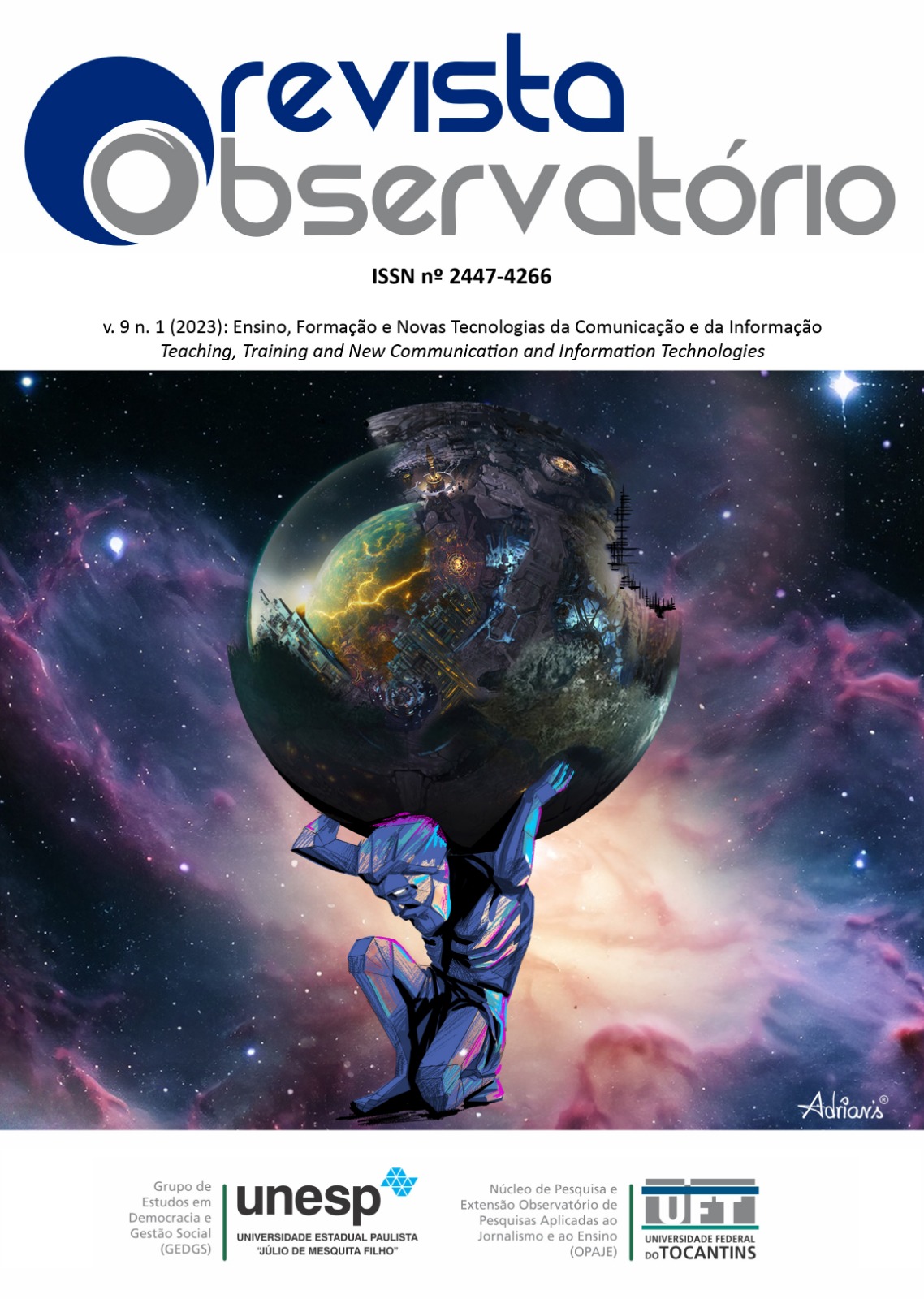ANALYSIS OF THE COMMUNICATION PROCESS OF SELECTIVE WASTE COLLECTION
DOI:
https://doi.org/10.20873/uft.2447-4266.2023v9n1a31ptKeywords:
Communication; Social Mobilization; Selective Collection; Municipal Solid Waste; Logistic Regression.Abstract
Considering the increase in the generation
of solid waste worldwide, selective waste
collection is one of the initiatives that
promote the reverse logistics of these
materials, in a way to reduce environmental
impacts. However, mobilizing the
population to promote the return of these
wastes has been a difficult task among
public managers. Only strategically
implemented communication, not treated in
a unique way to reach all audiences, can
contribute to the success of selective
collection programs. Therefore, this study
aims to identify significant variables, from
the individuals' opinion, that impede
understanding the message content
provided in selective collection programs.
For this, a case study was carried out in a city
located in the state of São Paulo, Brazil.
Multiple logistic regression was used as a
statistical analysis tool, in which the
response variable (the individual's capacity
to understand the content of the messages)
is considered as a function of 33 explanatory
variables. From the data analysis, it was
obtained the most adequate logistic model
with a predictive capacity of almost 92%,
such that six explanatory variables (Genre; If
the citizen performs separation of materials;
If the citizen knows how selective collection
helps the environment; If the citizen knows
the municipal cooperative; If the citizen
knows that the separation contributes to the
economy of the city; and, Citizen preference
for other media for feedback) were
significant to the response variable. The
results showed there is an interference of
variables in the individual's capacity to
understand the content of the messages,
indicating that in a communicational
process it is necessary to take into account
the peculiarities and heterogeneity of the
population to achieve the intended purpose.
Downloads
References
Bakhov, I. S. (2013). Government Multicultural Policy in Сanada in the Period of 1970–
s. Middle East Journal of Scientific Research, 15(10), 1450-1454.
doi: 10.5829/idosi.mejsr.2013.15.10.11611
Berrío-Zapata, C., Mosso Moreira, F., Gonçalves-Sant’Ana, R. C., & Muñoz-Ortega, M. L.
(2016). El paradigma de Comportamiento Informacional como alternativa para
comprender los fenómenos informacionales en América Latina. Revista
Interamericana de Bibliotecologia, 39(2), 133-147. doi:
17533/udea.rib.v39n2a05
IBGE (2021). Brazilian Institute of Geography and Statistics. Cidades e Estados, 2021.
Available in: <https://www.ibge.gov.br/cidades-e-estados/sp/tupa.html>.
Cezar, L. C. (2018). Reflexões sobre a comunicação em políticas públicas: Proposta de
um modelo de avaliação da comunicação governamental. Revista de
Administração Pública, 52, 52-70. doi: 10.1590/0034-7612165920
Christensen, M., & Nilsson, A. E. (2018). Media, Communication, and the Environment in
Precarious Times. Journal of Communication, 68(2), 267-277.
doi: 10.1093/joc/jqy004
Grodzi´nska-Jurczak, M., Tarabuła, M., & Read, A. D. (2003). Increasing participation in
rational municipal waste management - a case study analysis in Jaslo City
(Poland). Resources, Conservation and Recycling, 38(1), 67-88. doi:
1016/S0921-3449(02)00124-6
e-ISSN nº 2447-4266
Palmas, v. 9, n. 1, p. 1-13, 2023
http://dx.doi.org/10.20873/uft.2447-4266.2023v9n1a31en
Hosmer Jr., D. W., Lemeshow, S., & Sturdivant, R. X. (2013). Applied logistic regression
(Vol. 398). New York: John Wiley & Sons.
Lim-Wavde, K., Kauffman, R. J., & Dawson, G. S. (2017). Household informedness and
policy analytics for the collection and recycling of household hazardous waste in
California. Resources, Conservation and Recycling, 120, 88-107.
doi: 10.1016/j.resconrec.2016.10.007
Lyas, J. K., Shaw, P. J., & Van-Vugt, M. (2004). Provision of feedback to promote
householders’ use of a kerbside recycling scheme: a social dilemma perspective.
Journal of Solid Waste Technology Management, 30(1), 7-18. Available in:
<https://eprints.soton.ac.uk/48013.
Macarthur, E. (2013). Towards the circular economy Journal of Industrial Ecology, 2(1),
-44.
Martins, G. A. (2017). Estatística Geral e Aplicada. São Paulo: Atlas SA, 2008. NATIONAL
WEATHER SERVICE. Cold & Warm Episodes by Season. Climate Prediction Center.
Miller Associates. (1999). Project INTEGRA Research, Attitudes and Behaviour. Report 1:
Main findings. Southampton, UK.
Montgomery, D. C., Peck, E. A., & Vining, G. G. (2001). Introduction to linear regression
analysis. Nova York: John Wiley & Sons.
Moreau, V., Sahakian, M., Van Griethuysen, P., & Vuille, F. (2017). Coming full-circle: why
social and institutional dimensions matter for the circular economy. Journal of
Industrial Ecology, 21(3), 497-506. doi: 10.1111/jiec.12598
Moscovici, S. (2009). Representações sociais: investigações em psicologia social.
In Representações sociais: investigações em psicologia social (pp. 404-404).
UN - United Nations. (2021). 2030 Agenda: Sustainable Development Goals, 2015.
Available in:
<https://sustainabledevelopment.un.org/content/documents/2125203
%20Agenda%20for%20Sustainable%20Development%20web.pdf>.
Perrin, D., & Barton, J. (2001). Issues associated with transforming household attitudes
and opinions into materials recovery: a review of two kerbside recycling schemes.
Resources, Conservation and Recycling, 33(1), 61-74: doi: 10.1016/S0921-
(01)00075-1
Romanenko, Y. O. (2021). Place and role of communication in public policy. Actual
Problems in Economics, 176(2), 25-32, 2016. Available in: <http://irbisnbuv.gov.ua/cgibin/irbis_nbuv/cgiirbis_64.exe?C21COM=2&I21DBN=UJRN&P21DBN=UJRN&IMA
GE_FILE_DOWNLOAD=1&Image_file_name=PDF/ape_2016_2_5.pdf>.
Saavedra, Y. M. B., Iritani, D. R., Pavan, A. L. R., & Ometto, A. R. (2017). Theoretical
contribution of industrial ecology to circular economy. Journal of Cleaner
Production, 170, 1514-1522, 2017. doi: 10.1016/j.jclepro.2017.09.260
Saphores, J. D. M., Nixon, H., Ogunseitan, O. A., & Shapiro, A. A. (2006). Household
willingness to recycle electronic waste: an application to California. Environment
and Behavior, 38(2), 183-208. doi: 10.1177/0013916505279045
Timlett, R. E., & Williams, I. D. (2008). Public participation and recycling performance in
England: A comparison of tools for behaviour change. Resources, Conservation
and Recycling, 52(4), 622-634. doi: 10.1016/j.resconrec.2007.08.003
Tucker, P. (2001). Understanding recycling behavior. Paper technology, 42(9), 51-54.
Williams, I. D., & Cole, C. (2013). The impact of alternate weekly collections on waste
arisings. Science of the Total Environment, 445, 29-40. doi:
1016/j.scitotenv.2012.12.024
Published
How to Cite
Issue
Section
License
Copyright (c) 2023 Observatory Journal

This work is licensed under a Creative Commons Attribution-NonCommercial 4.0 International License.
[PT] Autores que publicam nesta revista concordam com os seguintes termos:
1. Autores mantém os direitos autorais e concedem à revista, sem pagamento, o direito de primeira publicação, com o trabalho simultaneamente licenciado sob a Creative Commons Attribution License (CC BY-NC 4.0), permitindo o compartilhamento do trabalho com reconhecimento da autoria do trabalho e publicação inicial nesta revista.
Leia todos os termos dos direitos autorais aqui.

